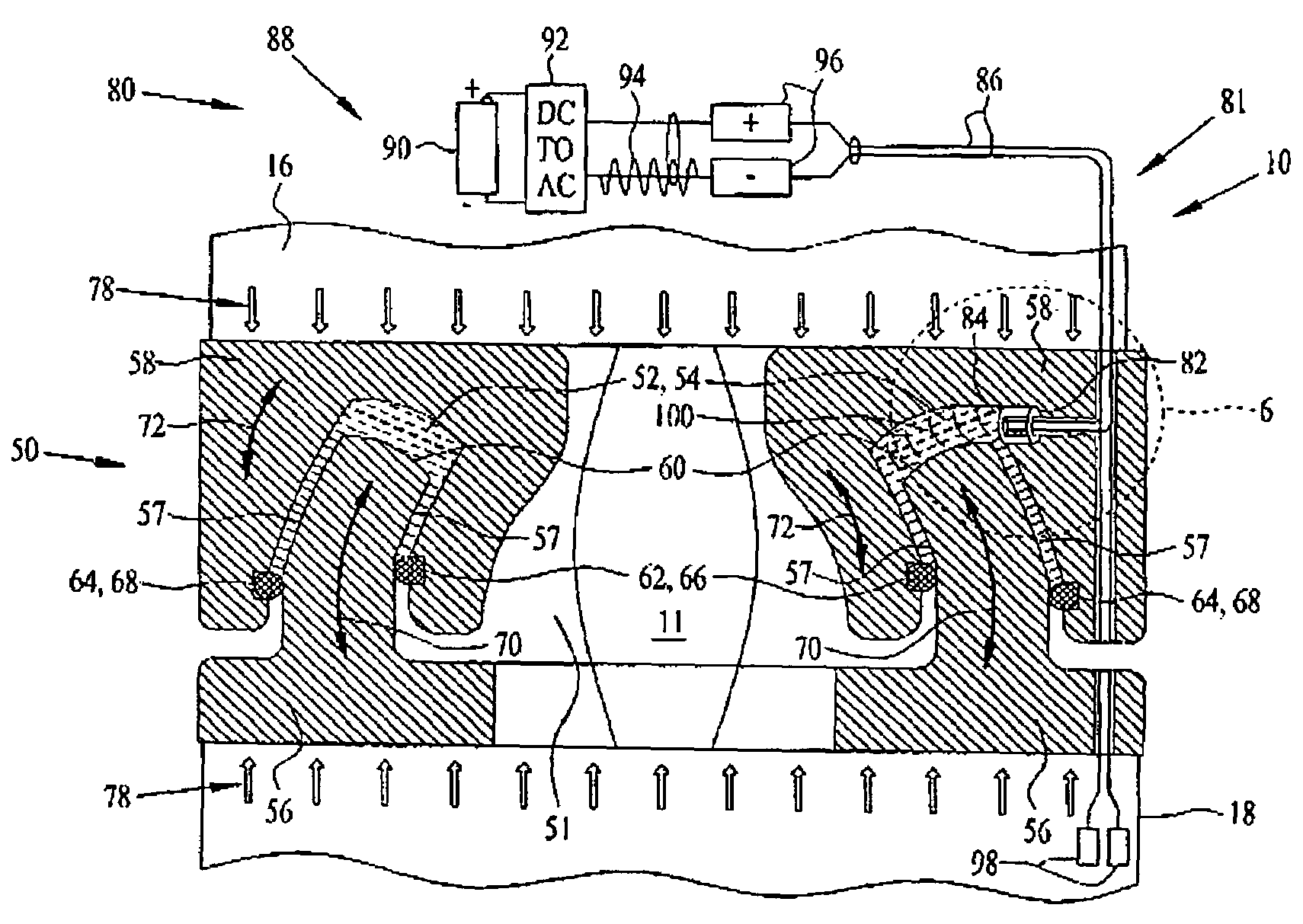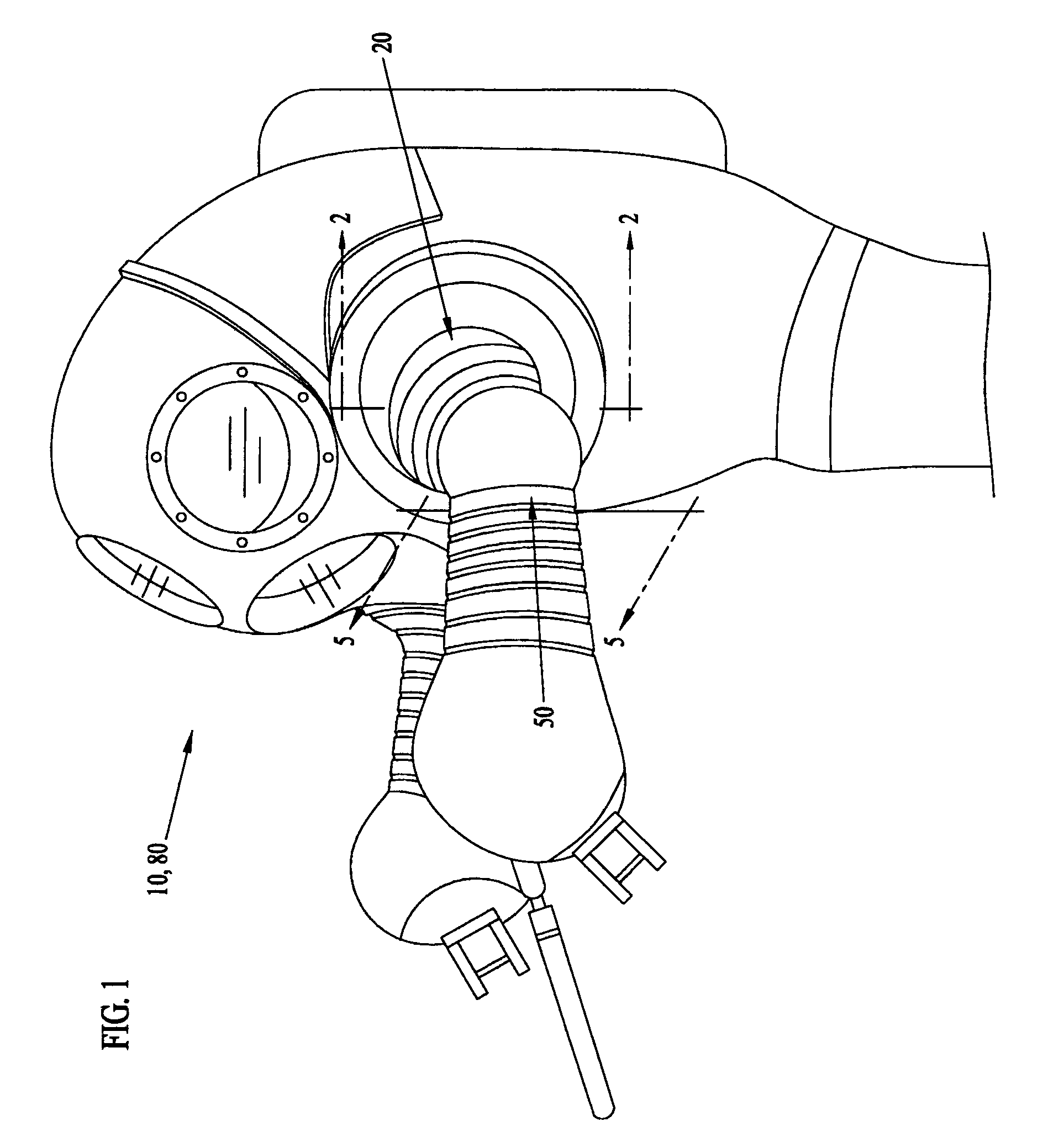Active torque reduction for hydraulically filled joints
a technology of hydraulically filled joints and active torque reduction, which is applied in mechanical equipment, transportation and packaging, underwater equipment, etc., can solve the problems of less “exploration” activity, less friction in the starting torque, so as to reduce the initial torque and reduce the starting torque. , the effect of ensuring smooth motion
- Summary
- Abstract
- Description
- Claims
- Application Information
AI Technical Summary
Benefits of technology
Problems solved by technology
Method used
Image
Examples
Embodiment Construction
[0020]Referring to FIG. 1, a diver is wearing an atmospheric dive suit (ADS) 10 to perform undersea tasks at considerable depths in the ocean. ADS 10 is a one-man anthropromorphically configured submersible that keeps a diver at the surface pressure of one atmosphere during deep dives. Many contemporary ADSs have rotary joints (cylindrical joints and / or spherical joints) to allow motion of the diver's arms and legs.
[0021]Accordingly, ADS 10 has a plurality of rotary joints including cylindrical joints and / or spherical joints, only one cylindrical joint 20 and one spherical joint 50 are designated. Some or all of joints 20, 50 of ADS 10 could be modified to include a torque reduction system 80 of the invention as part of each to reduce the amount of startup torque needed to begin their displacements and increase the smoothness of motion during their continuing displacements.
[0022]Referring also to FIG. 2, in accordance with current practice, cylindrical joints, such as the only desig...
PUM
 Login to View More
Login to View More Abstract
Description
Claims
Application Information
 Login to View More
Login to View More - R&D
- Intellectual Property
- Life Sciences
- Materials
- Tech Scout
- Unparalleled Data Quality
- Higher Quality Content
- 60% Fewer Hallucinations
Browse by: Latest US Patents, China's latest patents, Technical Efficacy Thesaurus, Application Domain, Technology Topic, Popular Technical Reports.
© 2025 PatSnap. All rights reserved.Legal|Privacy policy|Modern Slavery Act Transparency Statement|Sitemap|About US| Contact US: help@patsnap.com



